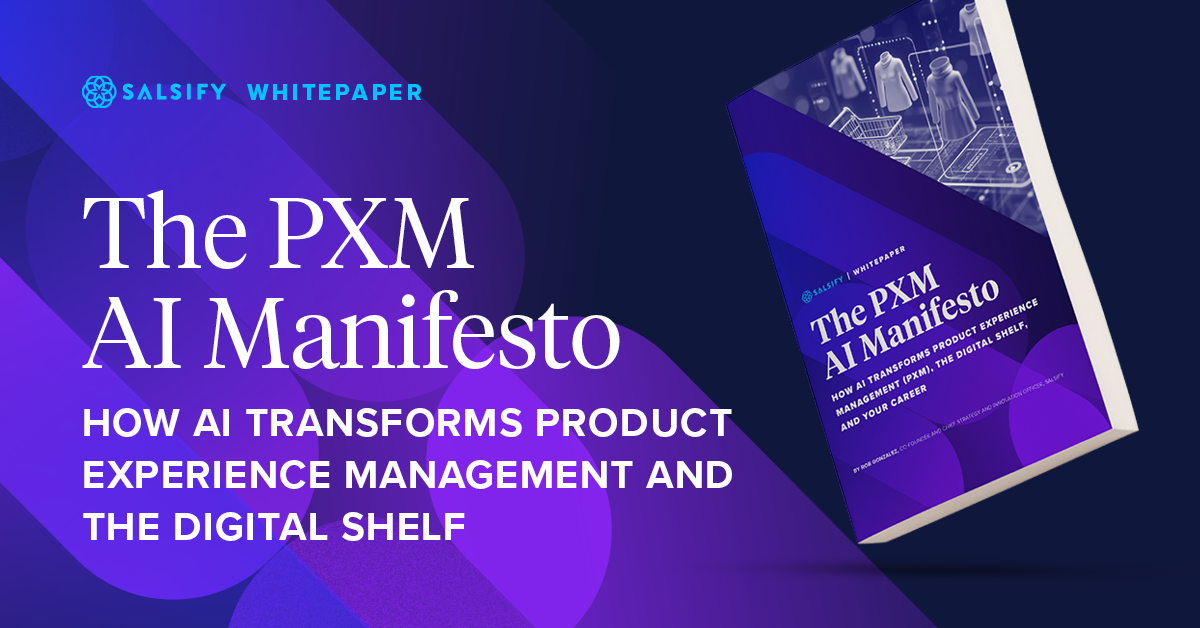Ecommerce AI: What Does 'Google Zero' Mean for Brands?
Written By: Conor Hockett
If you’re an ecommerce-focused brand, it probably feels like artificial intelligence (AI) has pitched a tent in your home office, altering how your marketing team looks at the space it used to own.
No-click results have done more than muddy search engine optimization strategies — they’ve caused significant decreases in organic traffic across many industries.
According to 2025 research from Bain & Company, a global management consulting firm, about 60% of searches now end without a user progressing to another destination site.
The rise of AI overviews on traditional search engines has led some to predict the end of organic traffic. While this phenomenon — dubbed “Google Zero” by Nilay Patel, editor-in-chief of The Verge — is still hypothetical, a dip in site visitors is something organizations must plan for in this evolving ecommerce AI landscape.
To help you prepare for this possibility, learn more about Google Zero, how it could affect brands, and what you can do to adapt to these changes.
What Is Google Zero?
Google Zero refers to a time when Google stops driving traffic from its search engine to external websites. In this scenario, Google would function as a fully fledged answer engine, providing AI-powered responses to every query at the top of the search results page.
You can get a sense of this potential future with specific searches today. For example, let’s say you’re researching Salsify’s product experience management offerings for your business. You type “How does Salsify help brands?” in Google.
The engine displays a lengthy paragraph summarizing Salsify’s value, as well as sections outlining notable functionality, such as centralized product content and omnichannel syndication.
In your mind, the result provides good information — so good, in fact, that you don’t feel the need to click on any of the link cards within the overview, even if you’re uncertain whether the breakdown was complete or accurate.
Without a click, though, Salsify (or any brand in question) misses out on website traffic and an opportunity to turn a potential customer into a lead.
Unless search engines update how they source information for summaries, attribution will always be included, meaning the potential for organic traffic will still be possible. This makes link cards one of the most interesting aspects of Google Zero to watch.
However, studies show that people rarely click on these cards. In a survey of U.S. adults, Pew Research Center found that only 1% of Google users clicked a link in a summary on pages displaying one.

If users didn’t have search results as an option, this percentage would likely go up. However, it stresses the urgency of what a Google Zero future could mean.
In this scenario, marketing teams would fight over what links surface in these summaries, instead of search rankings. This competition is already underway, as many brands have started adjusting their strategies to appear in AI-powered overviews.
How Could Google Zero Affect Brands?
Dramatic declines in organic traffic would have widespread implications, demanding a fundamental shift in strategy. But how close is Google Zero to becoming a reality? Here’s what the data reveals about the current state of ecommerce AI.
A 2025 Accenture report found that consumers now view generative AI (GenAI) as a trusted adviser, with nearly 50% of survey respondents saying they’ve made a purchase decision with the support of GenAI. These tools are the second most popular source for product recommendations among active users, behind only physical stores.
The same Pew Research Center report found that about 60% of users encountered an AI-generated summary in at least one Google search. Respondents who saw a summary were nearly 50% less likely to click on links to other websites than those who didn’t see an AI overview in their search.
Bain & Company’s survey also revealed that nearly 80% of consumers now rely on zero-click results in at least 40% of their searches, reducing organic traffic by as much as 25%.
It’s fair to wonder if shorter attention spans contribute to a preference for quick AI summaries. If you can receive a direct answer or product recommendation at the top of the page, why scroll or click on another resource, right?
However, many shoppers are willing to invest more time to find what they want. Salsify’s “2025 Consumer Research” report found that 41% of shoppers said they would look up to page three — with 26% even willing to look up to page 5 — before clicking on a page to find the right product.

These findings show the faith consumers have in AI-powered responses and recommendations, and it’s up to brands to capitalize on this opportunity.
4 GEO Strategies Brands Can Implement
If Google Zero comes to pass, the strategy moving forward is simple: Go all-in on generative engine optimization (GEO).
Most brands have already started implementing GEO strategies, and at a high level, these are all about structuring your content to answer user queries.
AI tools prefer to reference authoritative, well-sourced material in their responses. This technology is also designed to produce the desired results as quickly as possible, so brands should aim to create digestible content that GenAI can analyze more easily.
Here are some GEO best practices to follow:
Write With Context in Mind
Much like lifestyle photos show people in real-world situations, your content should provide relevant details that answer the how and why.
For example, users might search “What’s the best jacket for hiking?” GenAI prioritizes intent, so try to anticipate their higher-level considerations. “Will this jacket keep me dry if it rains, but be breathable enough if the sun comes out after?” Generative engines also feed on context, because it enables them to generate the nuanced responses people crave.
Use Lists and Links
GenAI prefers well-organized copy, so ditch those walls of text in favor of bulleted or numbered lists. These are easier — and more engaging — to read for humans and machines.
Accurate, relevant content is fundamental to GenAI, and source quality factors heavily into what information surfaces in summaries. Keep your pages current and link to credible sources every time.
Be Human
Clear, conversational speech is one of AI’s top priorities, so don’t rely too heavily on tools like ChatGPT to create your content. Generative engines value human-written information, so be the confident subject matter expert that they’re searching for.
Looking for more detail? Check out this step-by-step guide for how to do GEO for ecommerce.
Embrace Omnichannel
Building and executing an omnichannel strategy is another necessary step for businesses, not only to prepare for the Google Zero eventuality, but also to meet the demands of modern consumers. This is the always-on era of shopping after all, and brands and retailers need to diversify where and how their products surface to customers.
For example, nearly 70% of shoppers have participated in ambient shopping — the act of making a purchase while doing something else, such as browsing social media or watching a streaming service, without intentionally searching for a product — according to Salsify’s “2025 Consumer Research” report.
This speaks to the breadth of platforms consumers use.
The same Salsify report found that more than 50% of shoppers discover new brands and products through five different channels:
- Online marketplaces (57%)
- Search engines (55%)
- Physical retail stores (54%)
- Social media (51%)
- Recommendations from friends and family (51%)
Establishing a consistent brand presence and connecting your campaigns across online and offline channels is one of the best ways to capture customers. If organic traffic disappears altogether, businesses that haven’t embraced omnichannel might find themselves too far behind to catch up.
Evolve for Google Zero (and Everything Else)
Google Zero is the latest and weightiest example of AI in ecommerce, but it certainly won’t be the last. Adjusting to shifts in search behavior is vital to keeping your content and products visible in this evolving landscape.

The PXM AI Manifesto
GenAI is reshaping the digital shelf, but shopping is remaining uniquely human. Learn how you can adapt to this era of AI-integrated search.
DOWNLOAD WHITEPAPERWritten by: Conor Hockett
Conor Hockett is a content marketing manager at Salsify, based out of San Diego. He enjoys crafting brand narratives and finding unique story angles that push the commerce conversation forward.
Recent Posts
How Many Digital Sales Channels Do Shoppers Review Before Purchasing Products?
What the Data Says About Consumer Interest in AI Shopping Agents
How Retailers Can Use Geolocation To Create Personalized Shopping Experiences
Subscribe to the Below the Fold Newsletter
Standing out on the digital shelf starts with access to the latest industry content. Subscribe to Below the Fold, our monthly content newsletter, and join other commerce leaders.

.svg)